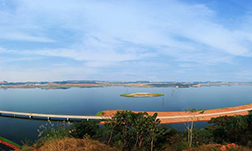Why buy a water filter? Is your tap water toxic?
Publicado:2016-06-14
Water filters are becoming increasingly popular, as people discover that tap water can contain less than beneficial ingredients, and sometimes, even toxic ingredients. Because of that, some people prefer to purchase bottled water or to use a home water filter system. With the recent news about lead in tap water in Flint, Michigan, more people are looking to filter their home water supply. In recent years, toxic algae blooms have contaminated public drinking water in city water supplies.
What are the various types of water filters?
There are a variety of types of water filters. Distilled water and deionizer water also removed impurities from tap water. Some work by running the water through a type of filter, and some by a system called reverse osmosis. Also available are water filters that can adjust the pH of tap water, so you can create alkaline water in your home.
Pitchers that contain a filtration system are also available, and some are quite good at filtering water, but they often need to have more frequent and expensive filter replacements. For long term usage, an in-sink option is best.
What minerals are in tap water?
Depending on the water supply in your area, natural minerals from the reservoirs and pipes can ad phosphates, nitrates, and chlorine to the water. Copper or lead can be added to the water as it flows through the plumbing system. In some areas, natural asbestos is in the tap water because the soft water running down the mountains absorbs it on the way down. Natural minerals such as salt, iron, and calcium are found in most water and are beneficial to the body. Town water filtration systems will remove particles and purify water but many of these small particles remain in the tap water. In addition, some cities add chemicals to their water, such as fluoride and chlorine, which can purify water, but which some people do not want to consume.
What is reverse osmosis?
Is reverse osmosis water healthy?
Water that has run through a reverse osmosis process has been purified to remove any minerals. Some of these minerals are natural trace minerals that are good for the body and have important functions for health. Adding minerals to the water after it is purified can remedy this. Reverse osmosis is a slow way of filtering water, so if water consumption is high, the filters cannot keep up. An argument against reverse osmosis is that it takes two or three gallons of water to purify one gallon of water. In spite of this, many people find that reverse osmosis purification is beneficial to their health and prevents harmful chemicals from getting into their drinking water. Reverse osmosis water purifying systems need to have their filters replace in order to keep the water pure. When considering a system like this, be sure to enquire about the cost of replacement filters.
When water is purified by reverse osmosis, it first passes through a membrane, which is about .0001 microns thick. The membrane takes out up to 99% of the chemicals in the water. The water that is left has no minerals in it. Different types of filters are used in the various reverse osmosis systems. A cellulose tri-acetate membrane removes between 84% to 94% of minerals. The film composite removed between 94% and 98% of solids. The highest rated are the Hi-S membranes that removed between 97.5 and 99%. The Hi-S is said to be very good at removing dissolved silicates.
- anterior:7 Best Ways To Filter Your Water











